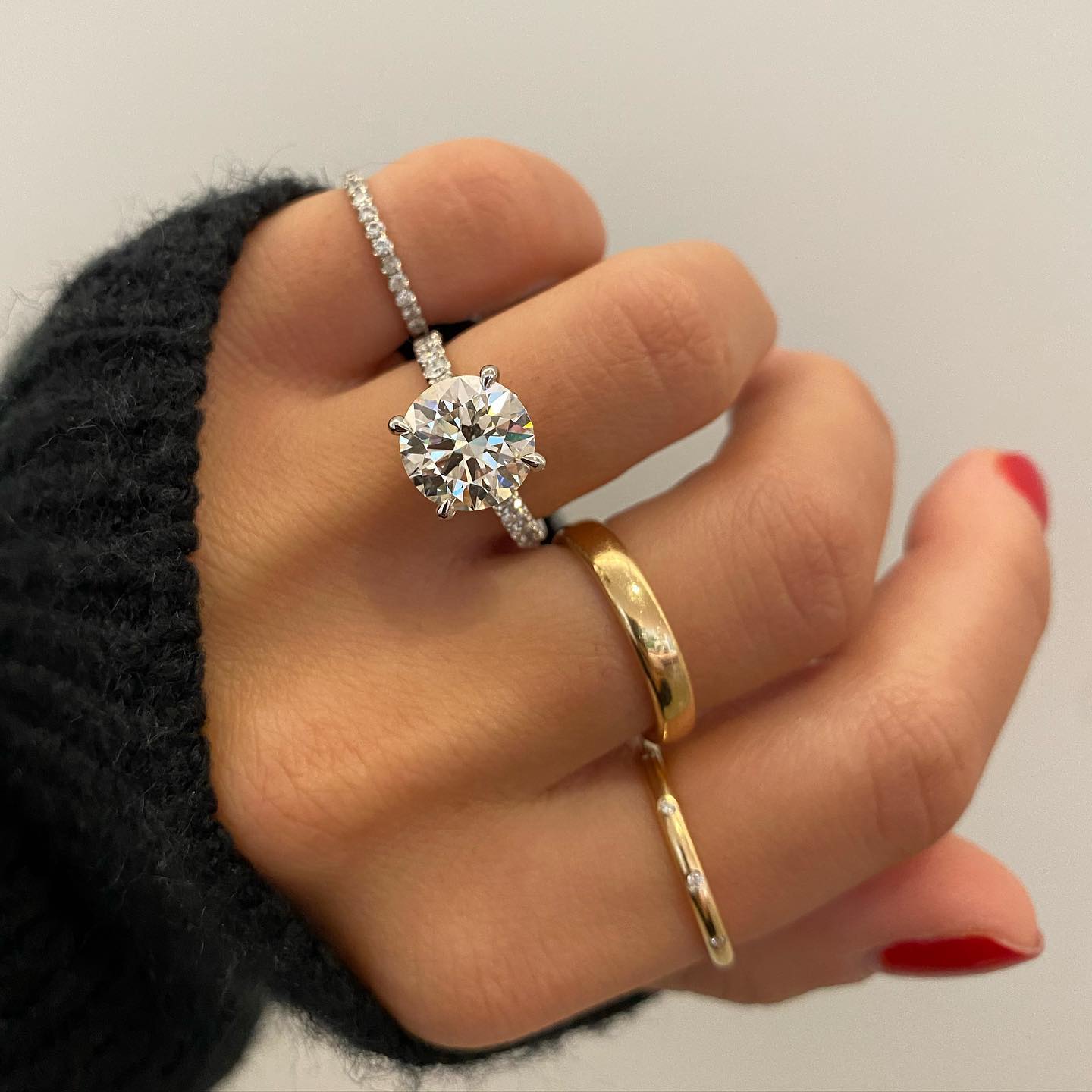The first known round cut diamond to exist was made in the 1700s. However, diamond cutting hadn’t become a large part of jewelry making at that time and wasn’t easily accessible, so round cuts didn’t take off until the late 1800s, when the bruting machine was invented and allowed diamonds to be cut into round shapes.
However, these round shapes weren’t near as intricate as the round diamonds we know today. The round, brilliant cut we know today was created in 1919 by Marcel Tolkowsky’s mathematical formula for cutting diamonds correctly.
Jewelers were on the hunt for the most brilliant diamond cut possible, using the most facets to reflect light. The search continued until they successfully created the round diamond cut by perfecting Tolkowsky’s formula. From there, technology has advanced more and more, giving us perfectly symmetrical round cut diamonds like we see today.

- Ideal Table Percentage: 54% - 58%
- Ideal Depth Percentage: 60% - 62.5%
One of the great aspects of round cut diamonds is that they can be beautiful in practically any setting. However, there are a few ring settings that truly allow the beauty of this ornate diamond cut to shine through.
The solitaire setting, also known as four prong, is a simple setting that is elegant and allows for an impressive amount of light to reach the diamond, giving a round cut diamond the highest ability to sparkle. The solitaire setting isn’t as ornate as others, but that’s part of its charm. Plus, a true solitaire setting includes less metal than other settings, making it a more affordable option if that’s part of your deciding factor!
A variation of the four prong solitaire setting is the six prong solitaire, also known as the Tiffany setting. This name comes from the fact that Tiffany’s invented this setting for larger diamonds in the 19th century. The extra two prongs provide more support for larger round diamonds, especially those that are two or more carats. This setting provides the same benefits as the four prong!
If you’re looking for a setting option that is more intricate than a solitaire, another popular option is Pavé Settings. These settings have many tiny diamonds essentially paving the band around the center diamond, adding extra sparkle to the ring. There are countless variations of pave settings, ranging from classic styles to more whimsical designs, giving you a bit more creative freedom when choosing one.
Another setting that has become more popular in recent years is the halo settings. This style includes a ring of smaller stones that circles around the center stone. This design can create the illusion of a larger stone, or at least the sparkle included in one, without the larger price tag associated with larger round cut diamonds. Halo settings provide extra sparkle, much like pavé settings do!
Round cut diamonds are classic and eye-catching. Not only that, but they come with a variety of benefits as well! Some of the benefits of choosing a round cut diamond include:
- No sharp corners that may snag on clothing.
- They have the highest brilliance of any diamond cut.
- Round diamond cuts can mask flaws in your stone.
- They’re incredibly popular and versatile.
Round cut diamonds are a wonderful choice for anyone looking for a classic and stunning diamond to showcase in a ring. The style has been popular for many years and will likely keep that popularity for years to come, so it’s a great choice that will be sure to catch attention when it reflects the light into brilliant sparkles!



























